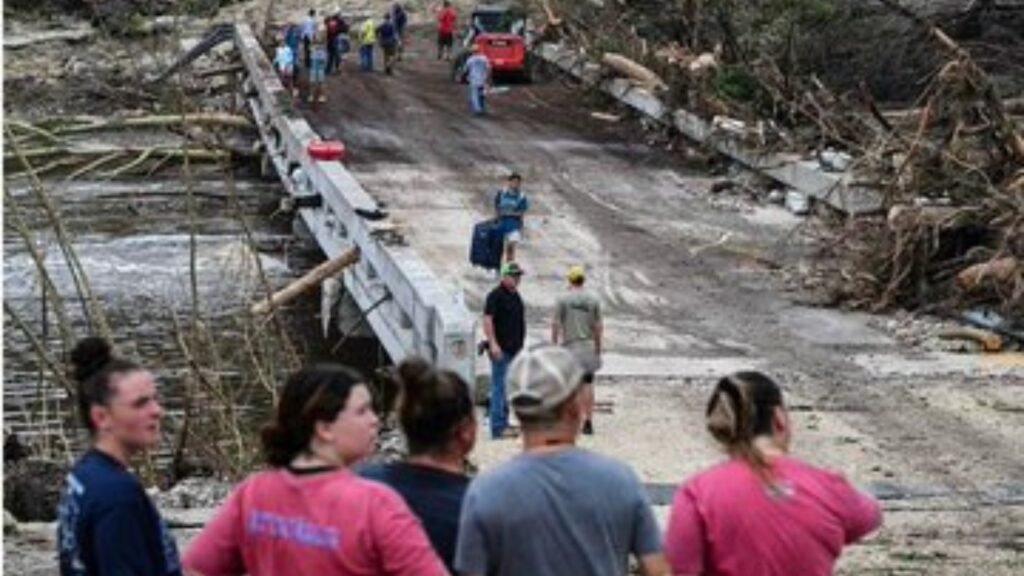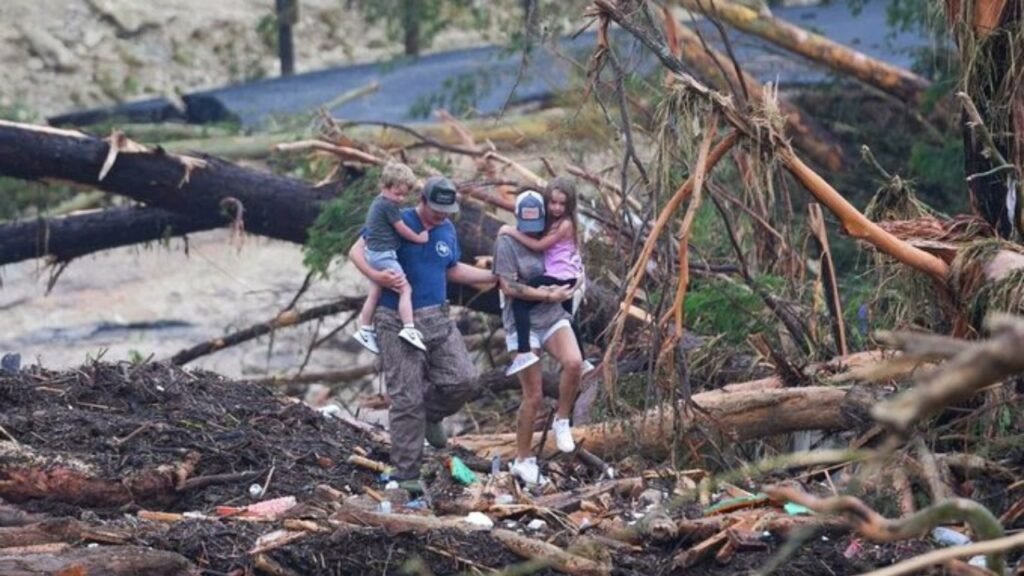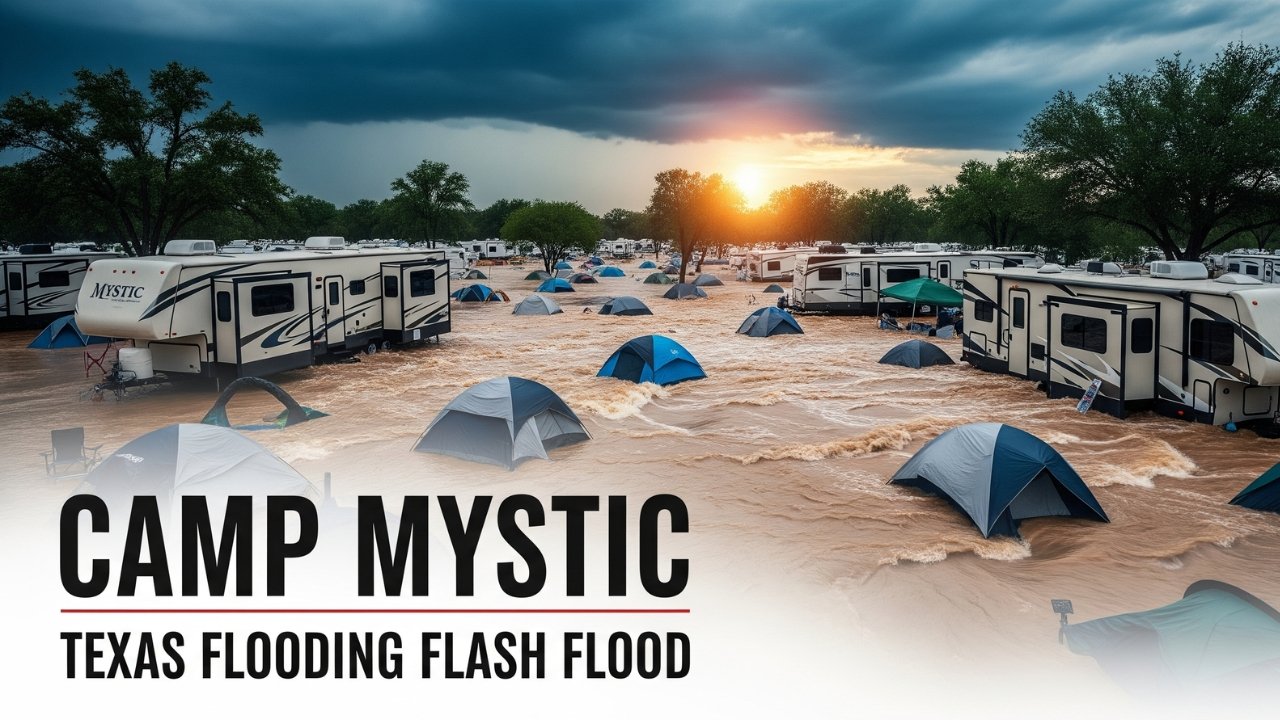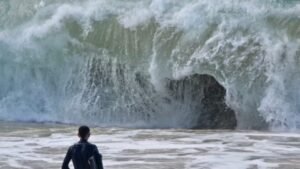Catastrophic Flash Flood Devastates Camp Mystic in Texas Hill Country
Introduction
Nestled among cypress, live oak, and pecan trees along the banks of the Guadalupe River, Camp Mystic has been a cherished summer haven for generations of girls since its founding in 1926. Known for fostering lifelong friendships and spiritual growth in a wholesome Christian environment, the camp hosted approximately 750 girls aged 7 to 17 during its summer session in 2025. However, the idyllic setting turned into a nightmare on July 4, 2025, when a flash flood of historic proportions swept through the Texas Hill Country, claiming numerous lives and leaving the camp in ruins.
The Incident
In the early hours of July 4, 2025, torrential rains pounded Kerr County, Texas, with some areas receiving over 10 inches of rainfall in a matter of hours, far exceeding the forecasted 4 to 5 inches. The Guadalupe River, which runs adjacent to Camp Mystic, rose dramatically from 7 feet to over 30 feet in just 45 minutes, reaching the second-highest level on record for the area. This rapid surge, described as a “wall of water” up to half a mile wide, caught campers, counselors, and staff off guard as many slept in low-lying cabins less than 500 feet from the riverbank. The floodwaters tore through the camp, destroying cabins, washing away roads, and scattering personal belongings, leaving behind mud-caked bunk beds and overturned furniture.
The National Weather Service had issued a flood watch for south-central Texas on July 3, followed by flash flood warnings and emergencies for Kerr County starting at 1 a.m. on July 4. However, the speed and intensity of the rainfall overwhelmed local emergency systems, and questions remain about the effectiveness of warning dissemination. Some reports suggest that critical vacancies at weather forecast offices and potential warning fatigue among residents in the flood-prone “Flash Flood Alley” may have compounded the tragedy.

Impact and Losses
The flash flood claimed at least 81 lives across Central Texas, with Kerr County bearing the brunt of the tragedy, reporting 68 deaths, including 28 children. Among the victims were campers and staff from Camp Mystic, with initial reports indicating that up to 27 girls were missing. By July 7, officials confirmed that 10 girls and one counselor remained unaccounted for, though the number of missing campers fluctuated in early reports. Several victims were identified by family members, including 8-year-old Sarah Marsh from Mountain Brook, Alabama, 9-year-old Janie Hunt from Dallas, 8-year-old Renee Smajjstrla, 9-year-old Lila Bonner, and 8-year-old twin sisters Hanna and Rebecca Lawrence, also from Dallas.
Among the most heartbreaking losses was Dick Eastland, the longtime director and co-owner of Camp Mystic, who died heroically while attempting to rescue campers. Eastland, who had run the camp with his wife, Tweety, since 1974, was described as a father figure to thousands of girls. His grandson, George Eastland, wrote on Instagram, “If he wasn’t going to die of natural causes, this was the only other way—saving the girls that he so loved and cared for.” The nearby Heart O’ the Hills camp also lost its director, Jane Ragsdale, though it was not in session at the time.
The physical devastation at Camp Mystic was profound. Photos from July 5 showed cabins with missing walls, broken windows, and personal effects strewn among debris. The camp lost power, water, and Wi-Fi, and the highway leading to the site was washed away, hindering rescue efforts. The surrounding area, known for its natural beauty, was littered with uprooted trees, wrecked vehicles, and debris piled along the riverbanks.
Rescue and Response
Rescue operations began immediately, with over 850 people saved across the region by July 6, including 237 from Camp Mystic and nearby areas, many airlifted by helicopter. The U.S. Coast Guard, Texas Game Wardens, and local first responders worked tirelessly, using helicopters, drones, boats, and even horses to navigate the debris-filled terrain. Counselors at Camp Mystic played a critical role, with one heroic counselor smashing a window to help girls escape through neck-high water and others forming human chains to guide campers to safety. Survivors, many without shoes, climbed rocky hills in the dark, singing songs and praying to stay warm.
Texas Governor Greg Abbott declared a state of emergency for 15 counties and visited Camp Mystic on July 5, vowing, “We won’t stop until we find every girl who was in those cabins.” President Donald Trump signed a federal disaster declaration for Kerr County on July 6, unlocking FEMA resources and support from the U.S. Coast Guard. Former Presidents George W. Bush and Barack Obama, along with celebrities like Shakira and Matthew McConaughey, expressed condolences and called for support for the victims. The Dallas Cowboys, Houston Texans, and NFL Foundation donated $1.5 million to aid relief efforts.
Reunification centers were established at Ingram Elementary School and Arcadia Live in Kerrville, where families anxiously awaited news. The Kerr County Sheriff’s Office set up dedicated lines for parents seeking information about missing campers, and the American Red Cross provided support for those searching for loved ones.
Ongoing Challenges and Criticism
As rescue efforts continued, additional rainfall on July 6 and 7 raised concerns about further flooding, with the National Weather Service extending flood watches for the region. The saturated ground and swollen waterways posed ongoing risks, complicating search operations. Critics, including some parents, questioned the camp’s preparedness, noting its location in “Flash Flood Alley” and the lack of timely evacuation orders. Serena Hanor Aldrich, a San Antonio lawyer whose daughters were safely evacuated, criticized camp leadership for not monitoring warnings from the Texas Division of Emergency Management and Kerr County. Others defended the camp, citing the unprecedented speed of the flood and the heroic actions of staff like Dick Eastland.

Community and Cultural Impact
For Texas girls, including daughters of former governors and President Lyndon B. Johnson’s family, Camp Mystic, a nearly century-old institution, has long served as a significant milestone.t milestone. Its loss reverberated across the state, with former campers like Clair Cannon describing the camp as a place of serene beauty and lifelong memories. The tragedy also highlighted the vulnerability of the Texas Hill Country, where the natural splendor of rivers and hills belies the danger of flash floods, as seen in a similar 1987 flood that killed 10 teenagers at another nearby camp.
On July 6, over 600 people gathered at Saint Michael and All Angels Episcopal Church in Dallas for a prayer service, reading the names of victims and missing campers, including 9-year-old Lila Bonner. The service, marked by the recitation of Psalm 23, demonstrated the profound sadness felt by communities far beyond Texas.
Looking Forward
As of July 7, 2025, search and rescue operations continue, with authorities pledging to persist until every missing person is accounted for. The death toll, already at 81 statewide, is expected to rise as more victims are identified. The tragedy has prompted calls for a review of emergency notification systems and flood preparedness in the Hill Country, particularly for camps located in high-risk areas. For now, the focus remains on recovery, mourning, and supporting the families of those lost or still missing.
Camp Mystic, once a place of laughter and adventure, now stands as a symbol of resilience and loss. As Katharine Somerville, a counselor who safely evacuated her campers, told Fox News, “We never even imagined that this could happen.” Yet, in the face of unimaginable grief, the spirit of the “Mystic girls” endures, carried forward by the courage of survivors and the memory of those who were lost.














Post Comment